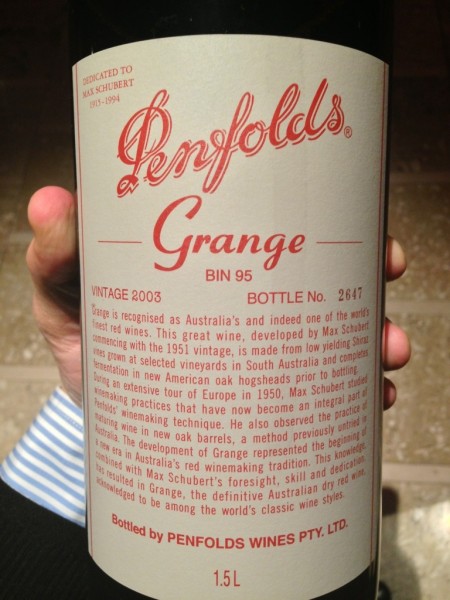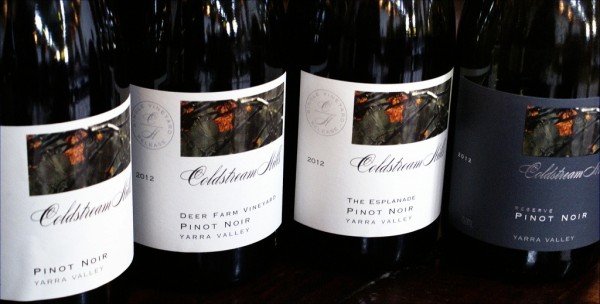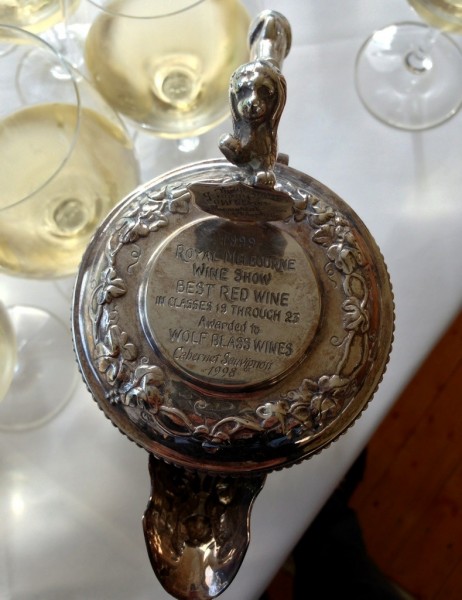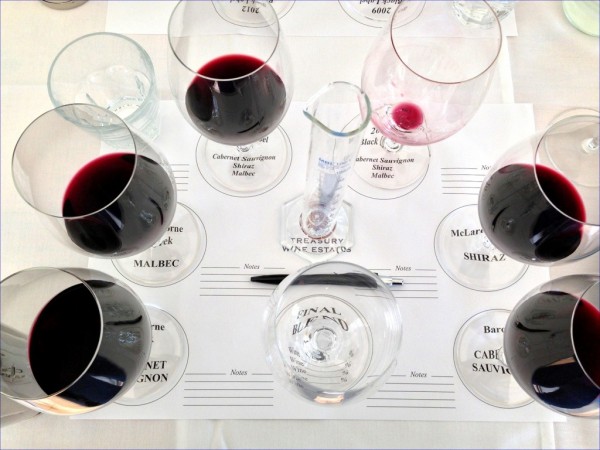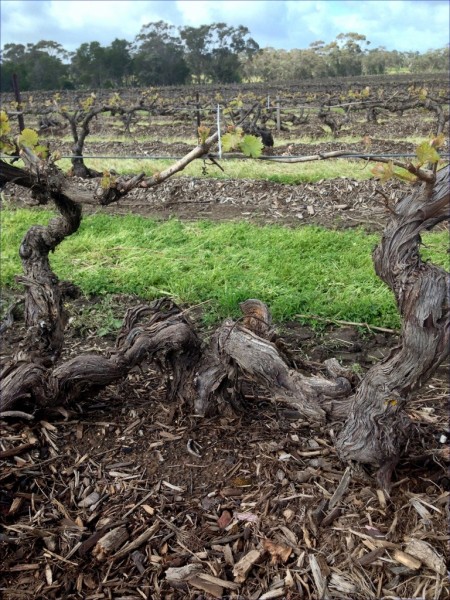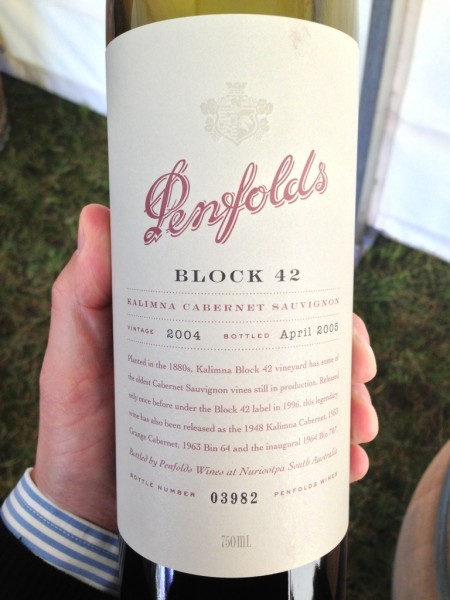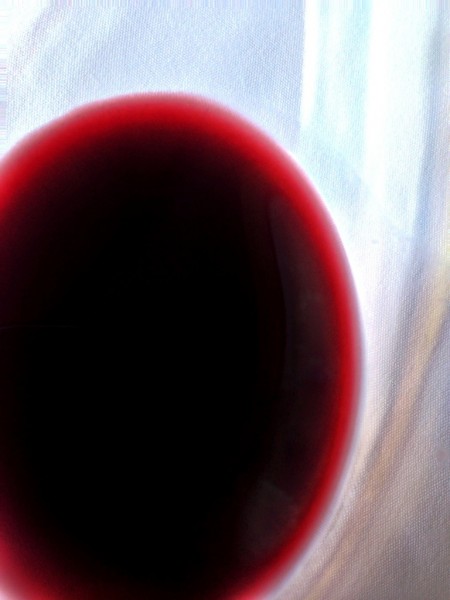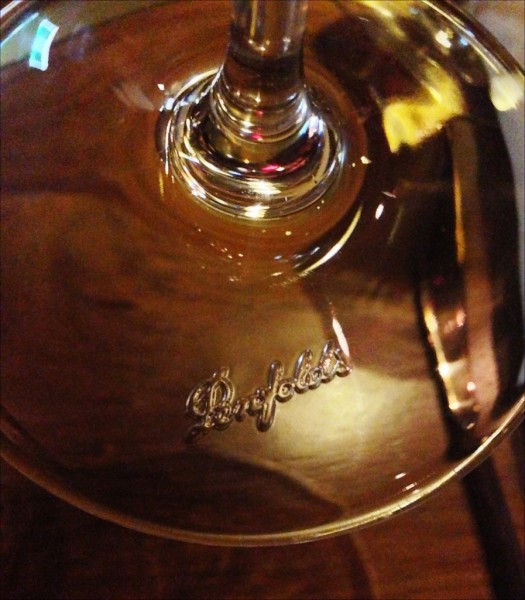Savour Australia Day 5: Treasures at Treasury
Posted on 22 September 2013
My next day here in Australia was hosted by Treasury Wine Estates. TWE is what resulted from the predictable implosion (“de-merge” as we heard in typical corporate speech) of the world’s second-largest drinks behemoth, Foster’s in early 2011. The wine brands were separated into TWE whose portfolio is really impressive: in Australia it includes Penfolds, Wolf Blass, Lindeman’s, Rosemount, Wynns, Seppelt, Saltram, Coldstream Hills as well as a long list of lesser brands.
Throughout a finely orchestrated day we tasted a vast number of wines from most of these brands, including 35 flagship bottlings during what must have been the boldest and longest official winery tasting in which I participated.
It was well worth the effort as many of these wines were stunners. The list is too long to fully report on here but I was impressed by Wolf Blass’ Platinum Shiraz, a rich, very Aussie-style but balanced and complete Shiraz with a fantastic 2002 vintage (this has consistently been one of the top vintages on tasting here in South Australia), an impresively tight yet juicy 2004 and a 1998 evolved and graceful.
But special brilliance came from two mini-horizontals of Coldstream Hills, the Yarra Valley winery founded by wine writer James Halliday which now lends extra splendour to the TWE portfolio. It might be my recent inclination toward these cool-clime Chardonnays and Pinot Noirs but I found these wines world-class. The basic 2011 Chard and 2012 PN are better than most winery’s top bottling while the respective Reserve bottlings from the same vintages were solid 95-pointers, likely the best examples of Chardonnay and Pinot I’ve tasted on this trip. Yet there was even more intellectual excitement from the stunningly mineral, Burgundian 2011 Rising Vineyard Chardonnay as well as the 2012 Deer Farm Vineyard Pinot Noir, resplendant over the Reserve with its incredible cranberry vibrancy.
After that mammoth tasting and lunch we proceeded to wine blending. Now that’s a fascinating exercise for anyone interested in wine. Blending is notoriously difficult especially if a house style is to be maintained (as in Champagne or Australia, with its tradition of multi-region blending) and many winemakers consider it trickier than vinification itself. TWE set up an interesting workshop around the blend of the Wolf Blass Black Label 2012. We got a glass of the preliminary blend (the wine is still in cask) as well as four ingredients: a pungent mentholly Langhorne Creek Cabernet Sauvignon, a tighter, more backward Barossa CS, a spicy, gamey McLaren Vale Shiraz and a brambley, jammy Langhorne Creek Malbec.
All we were told was that Malbec was less than 10% while the blend was based on LC CabSauv. By comparing the theoretical blend, a tight, tannic, very Cabernet-driven wine with the four ingredients, I first worked a 40% LC CS–30% Shiraz–20% Barossa CS–10% Malbec blend. But my blend didn’t quite taste like the control sample, which was less fat and rich and more crisp and fine-tannic, so I amended my blend reducing the plump Shiraz to 45% Langhorne Creek Cab–25% Shiraz–23% Barossa Cab and a 7% splash of Malbec. The actual blend turned out to be richer on Shiraz, surprisingly: it’s 47% LC Cab, 38% Shiraz and 7.5% each Barossa Cab and Malbec. Being closer to my original blend which I rejected on comparative tasting, it illustrated the challenges of wine blending.
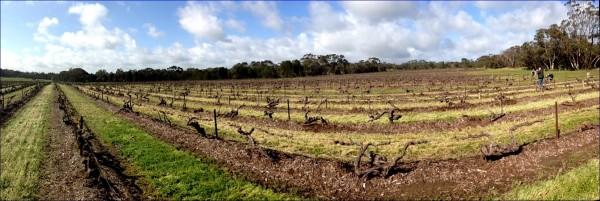
Penfolds’ Block 42 Cabernet Sauvignon vineyard in early spring. (Click to view full-screen panorama).
We wrapped up the day with a rather extravagant dinner at Penfolds’ newly refurbished Magill Estate restaurant, prepared by chef Scott Huggins & team (the wagyu beef was spectacular, although on the whole it wasn’t my best meal in Australia). We drank Penfolds’ top iconic bottlings in magnum including a majestic if slightly cerebral Yattarna Chardonnay 2006 and 2003 Grange. Australia’s priciest wine (I tasted the 1999 here) showed brilliantly well, fat and sweet and slightly wild at heart with a high-toned, almost volatile nose of a type nobody minds in Europe but that seems almost anathema in Australia. But it was eclipsed if not humbled by the 2002 Bin 707 Cabernet Sauvignon, a stupendous wine with diamond-fine grain and some extra freshness over the Grange.
That non-plus-ultra wine actually made our Treasury day come full circle: we had started the day with a visit to Block 42, (apparently) the world’s oldest Cabernet Sauvignon vineyard from where the Bin 707 is partly sourced. But in some vintages the wine is bottled separately and looking at those incredible gnarled vines, we enjoyed the 2004 Block 42 that was positively one of the best Cabernets I’ve ever tasted, with fantastic natural concentration and that incredible fine tannic grain you just can’t (yet) just produce in the cellar.
Treasury Wine Estates might be the sort of corporate monster nobody is in love with, but I came away with the strong sense that there are some fantastic wines being made here.
Disclosure: my trip to Australia including flights, accommodation and wine tasting programme is sponsored by Wine Australia. TWE is a diamond sponsor of Savour.


